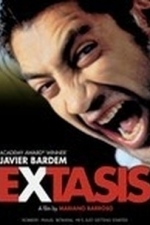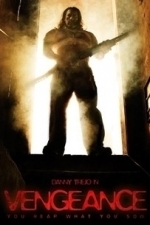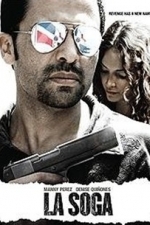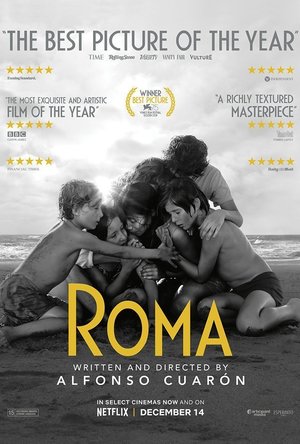Search

Presenting Celia Cruz
Book
Celia de la Caridad Cruz Alfonso lived a life larger than most. In a career that spanned fifty years...
Bob Mann (459 KP) rated Roma (2018) in Movies
Sep 28, 2021
“Siempre estamos solas”
Alfonso Cuarón‘s “Roma” has been lauded with praise and award’s hype, and I must admit to have been a little bit snooty about it. A black-and-white Spanish language film with subtitles that – to be honest – looks a bit dreary: can it really be that good? Having now (finally) seen it on Netflix I can confirm that’s a big YES from my point of view. It’s a novelty of a glacially slow film that grips like a vice.
A primer on 70’s Mexican History.
This is a film about ordinary life set against tumultuous times. Set in the Colonia Roma district of Mexico City (if you were puzzled, as I was, where the title came from) it is an “Upstairs, Downstairs” tale of Cleo (Yalitza Aparicio), a maid and nanny to a middle class family in the early 70’s.
There are two intertwined stories here: Cleo’s personal story and that of the family background in which she works.
Cleo has a pleasant enough life working as partners in crime in the household with Adela (Nancy García García). Life is about getting the work done (well, more of less), keeping the four children happy – to who she is devoted – and scraping enough by to spend her downtime with her martial arts boyfriend Ramón (José Manuel Guerrero Mendoza).
Meanwhile the lady of the house Senora Sofia (Marina de Tavira) has an affluent and cosseted lifestyle amid her loving family.
But times are about to change for all of the players, as events – not just the events of the ‘Mexican Dirty War’ of 1971 going on in the background – transpire to change all their lives forever.
A masterclass in framing.
It’s criminal that I wasn’t able to get to see this in the cinema. Since every frame of this movie is a masterpiece of detail. There is just so much going on that your eyes dart this way and that, and you could probably watch it five times and see more. Even the opening titles are mesmerising, as the cobbled floor becomes a screen and an airliner lazily flies across it.
Even major action sequences, that other directors would fill the screen with (“Do you KNOW how much this scene is costing for God’s sake??”), are seen as they would typically be seen in real life – second hand, from a place of hiding. This is typified by the depiction of the Corpus Christi Massacre of June ’71, where the military, and more controversially the elite El Halconazo (The Hawks) of the Mexican army, turned on a student protest. Most of the action is seen as glimpses through the windows by the characters during a shopping trip to the second floor of a department store. How this was enacted and directed is a mystery to me, but it works just brilliantly.
A masterclass in pacing and panning.
One of Cuarón’s trademarks is the long take (think “Children of Men”) and here he (literally!) goes to town with the technique. An incredibly impressive scene has Cleo and Adela running through the streets of the City to meet their lovers at the cinema. It’s a continuous pan that again defies belief in the brilliance of its execution.
Even the mundane act of Cleo tidying up the apartment is done with a glorious slow pan around the room. Some of this panning is done to set the mood for the film (“Get settled in… this is going to be a long haul”) but others manage to evoke a sense of rising dread, an example at the beach being a brilliant case in point.
The cinematography was supposed to have been done by the great Emmanuel Lubezki, but he was unavailable so Cuarón did it himself! And it’s quite brilliant. So, that’s a lesson learned then that will reduce the budget for next time!
A personal story.
Cuarón wrote the script. Of course he did… it’s his story! He’s the same age as I am, so was nine years old for the autobiographical events featured in the film (he is the kid who gets punished for eavesdropping). Numerous aspects of the film are from his own childhood, including the fact that his younger brother kept spookily coming out with things that he’d done in his past lives! It’s a painful true story of his upbringing and of the life of Liboria Rodríguez: “Libo” to whom the film is dedicated.
Where the script is delightful is in never destroying the mood with lengthy exposition. Both of the key stories evolve slowly and only gradually do you work out what’s really going on. This is grown-up cinema at its finest.
It’s also a love letter from Cuarón to the cinema of his youth, a passion that sparked his eventual career. We see a number of trips to the local fleapit, and in one cute scene we seen a clip from the Gregory Peck space epic “Marooned”: the film that inspired Cuarón’s own masterpiece “Gravity“.
A naturalistic cast.
Casting a large proportion of the cast from unknowns feels like a great risk, but its a risk that pays off handsomely, particularly in the case of Yalitza Aparicio, who is breathtakingly naturalistic. Cuarón withheld the script from his cast, so some of the “acting” is not acting at all – specifically a gruelling and heartrending scene featuring Cleo later in the film. That’s real and raw emotion on the screen.
Marina de Tavira, although an actress with a track record, is also mightily impressive as the beleaguered and troubled wife.
Final Thoughts.
This is a masterpiece, and thoroughly deserves the “Best Picture” awards it has been getting. It’s certainly my odds on favourite, as well as being my pick, for the Oscar on Sunday. Will it be for everyone? Probably not.
There are some scenes which feel slightly ostentatious. A forest fire scene is brilliantly done (“Put out the small fires kids”), but then a guy in a monster suit pulls off his head-wear and starts singing a long and mournful song. Sorry?
There will also be many I suspect who will find the leisurely pace of the film excruciating; “JUST GET ON WITH IT” I hear them yelling at the screen. But if you give it the time and let it soak in, then you WILL be moved and you WILL remember the film long after you’ve seen it.
I remain cross however that this was released through Netflix. This is a film that deserves a full and widespread cinema release in 70mm format. It’s like taking an iPhone snap of the Mona Lisa and putting the phone on display instead.
A primer on 70’s Mexican History.
This is a film about ordinary life set against tumultuous times. Set in the Colonia Roma district of Mexico City (if you were puzzled, as I was, where the title came from) it is an “Upstairs, Downstairs” tale of Cleo (Yalitza Aparicio), a maid and nanny to a middle class family in the early 70’s.
There are two intertwined stories here: Cleo’s personal story and that of the family background in which she works.
Cleo has a pleasant enough life working as partners in crime in the household with Adela (Nancy García García). Life is about getting the work done (well, more of less), keeping the four children happy – to who she is devoted – and scraping enough by to spend her downtime with her martial arts boyfriend Ramón (José Manuel Guerrero Mendoza).
Meanwhile the lady of the house Senora Sofia (Marina de Tavira) has an affluent and cosseted lifestyle amid her loving family.
But times are about to change for all of the players, as events – not just the events of the ‘Mexican Dirty War’ of 1971 going on in the background – transpire to change all their lives forever.
A masterclass in framing.
It’s criminal that I wasn’t able to get to see this in the cinema. Since every frame of this movie is a masterpiece of detail. There is just so much going on that your eyes dart this way and that, and you could probably watch it five times and see more. Even the opening titles are mesmerising, as the cobbled floor becomes a screen and an airliner lazily flies across it.
Even major action sequences, that other directors would fill the screen with (“Do you KNOW how much this scene is costing for God’s sake??”), are seen as they would typically be seen in real life – second hand, from a place of hiding. This is typified by the depiction of the Corpus Christi Massacre of June ’71, where the military, and more controversially the elite El Halconazo (The Hawks) of the Mexican army, turned on a student protest. Most of the action is seen as glimpses through the windows by the characters during a shopping trip to the second floor of a department store. How this was enacted and directed is a mystery to me, but it works just brilliantly.
A masterclass in pacing and panning.
One of Cuarón’s trademarks is the long take (think “Children of Men”) and here he (literally!) goes to town with the technique. An incredibly impressive scene has Cleo and Adela running through the streets of the City to meet their lovers at the cinema. It’s a continuous pan that again defies belief in the brilliance of its execution.
Even the mundane act of Cleo tidying up the apartment is done with a glorious slow pan around the room. Some of this panning is done to set the mood for the film (“Get settled in… this is going to be a long haul”) but others manage to evoke a sense of rising dread, an example at the beach being a brilliant case in point.
The cinematography was supposed to have been done by the great Emmanuel Lubezki, but he was unavailable so Cuarón did it himself! And it’s quite brilliant. So, that’s a lesson learned then that will reduce the budget for next time!
A personal story.
Cuarón wrote the script. Of course he did… it’s his story! He’s the same age as I am, so was nine years old for the autobiographical events featured in the film (he is the kid who gets punished for eavesdropping). Numerous aspects of the film are from his own childhood, including the fact that his younger brother kept spookily coming out with things that he’d done in his past lives! It’s a painful true story of his upbringing and of the life of Liboria Rodríguez: “Libo” to whom the film is dedicated.
Where the script is delightful is in never destroying the mood with lengthy exposition. Both of the key stories evolve slowly and only gradually do you work out what’s really going on. This is grown-up cinema at its finest.
It’s also a love letter from Cuarón to the cinema of his youth, a passion that sparked his eventual career. We see a number of trips to the local fleapit, and in one cute scene we seen a clip from the Gregory Peck space epic “Marooned”: the film that inspired Cuarón’s own masterpiece “Gravity“.
A naturalistic cast.
Casting a large proportion of the cast from unknowns feels like a great risk, but its a risk that pays off handsomely, particularly in the case of Yalitza Aparicio, who is breathtakingly naturalistic. Cuarón withheld the script from his cast, so some of the “acting” is not acting at all – specifically a gruelling and heartrending scene featuring Cleo later in the film. That’s real and raw emotion on the screen.
Marina de Tavira, although an actress with a track record, is also mightily impressive as the beleaguered and troubled wife.
Final Thoughts.
This is a masterpiece, and thoroughly deserves the “Best Picture” awards it has been getting. It’s certainly my odds on favourite, as well as being my pick, for the Oscar on Sunday. Will it be for everyone? Probably not.
There are some scenes which feel slightly ostentatious. A forest fire scene is brilliantly done (“Put out the small fires kids”), but then a guy in a monster suit pulls off his head-wear and starts singing a long and mournful song. Sorry?
There will also be many I suspect who will find the leisurely pace of the film excruciating; “JUST GET ON WITH IT” I hear them yelling at the screen. But if you give it the time and let it soak in, then you WILL be moved and you WILL remember the film long after you’ve seen it.
I remain cross however that this was released through Netflix. This is a film that deserves a full and widespread cinema release in 70mm format. It’s like taking an iPhone snap of the Mona Lisa and putting the phone on display instead.




